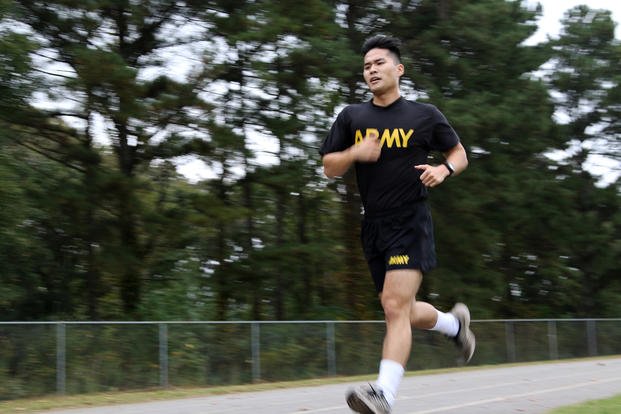You'll have to make yourself into a cardio machine if you want to succeed at any challenging special program in the military, federal law enforcement or in the firefighting professions. The required skills often include a need to master running long distances at a solid pace and an ability to ruck or do other load-bearing equipment hikes on unforgiving terrain. There's also swimming, treading and water confidence skills.
Here is an email from a former student whose lack of endurance preparation before such a selection program was exposed as a weakness in the first weeks.
Stew, I recently failed a federal law enforcement selection program due to my lack of running, swimming, and rucking ability. I lifted way too much prior to this event and neglected my cardio. Any advice on how to improve across the board on the cardio events but also not lose too much weight or strength. Thanks, Reece.
One of the most challenging selection events can be simply meeting a running standard. These longer endurance events require a person to bring their A-game. They will either dig deep to reach that goal pace or quickly realize they did not prepare well enough.
Many will either fail to meet the standards in running, rucking or swimming or get injured due to the relative overuse injuries that accompany underprepared legs. However, there are ways to improve and prevent typical nagging injuries that can sideline your goals.
To answer your question, success will require you to drop some of the lifting and focus more on higher-repetition calisthenics for muscle stamina. You will also need to create a progressive running and rucking program, and use the pool as a secondary cooldown workout.
As you begin, you may want to mix in more non-impact cardio activity to help build your cardio base (bike, elliptical, rowing machine) and make your runs more focused on the pace you need to set for any fitness test events (i.e., a 1.5-mile timed run) and longer runs of five or more miles. This may be a six- to seven-minute pace for timed run test events and seven- to eight-minute miles for longer runs.
Consider a block periodization model of training where you can focus more on muscle stamina and endurance for three-week cycles, followed by one week of less running, rucking and high-rep calisthenics. This is considered a "de-load" week, where the goal is to recover from the miles and high repetitions but replace the workout with some maintenance lifting and more swimming as well.
This combination of lifting and swimming (or other non-impact cardio) can offer you a reprieve from the running and rucking progression by cutting the mileage this week by 50%-60% and replacing it with more swimming to make up for the cardio shift. The lifting is focused on maintenance lifts and reduction of repetitions to rest the joints.
The 3:1 block periodization model will allow you to focus primarily on your weaknesses while allowing some maintenance of your current strengths. In tactical fitness, getting good at all the elements of fitness is a requirement. This includes strength, power, load bearing, speed, agility (obstacle courses), endurance (run/swim/ruck), muscle stamina (calisthenics), carries, crawls, flexibility, mobility and grip.
The tactical fitness requirements are a bit different than your prior athletic training, where you had to master a few of the elements of fitness and could neglect the others not required by your sport. If you neglect any element of fitness when enduring a selection program for special ops-level training, you will not last long; any weakness will typically be exposed within the first week of training.
On the flip side, if strength was a weakness and you were struggling with load bearing or other strength events, you could rearrange the 3:1 block periodization model and do three weeks of lifting/strength training with moderate warmup and cooldown calisthenics. Use cardio to maintain endurance and muscle stamina. The de-load week will be a week off from lifting and more of a focus on calisthenics and cardio training.
Both models work and are good ways to train throughout the year so you never neglect a weakness, especially if you are considering or already serving within the tactical populations. Specifically, your workouts should look more like some of what you endured already. Running, rucking and swimming throughout the week will take time out of the normal exercise schedule and can be significantly more time requirements than just lifting alone.
The good news is that you can always mix calisthenics into these cardio events as muscle stamina and endurance work well together, just as strength, power, speed and agility tend to work well together.
Stew Smith is a former Navy SEAL and fitness author certified as a Strength and Conditioning Specialist (CSCS) with the National Strength and Conditioning Association. Visit his Fitness eBook store if you're looking to start a workout program to create a healthy lifestyle. Send your fitness questions to stew@stewsmith.com.
Want to Learn More About Military Life?
Whether you're thinking of joining the military, looking for fitness and basic training tips, or keeping up with military life and benefits, Military.com has you covered. Subscribe to Military.com to have military news, updates and resources delivered directly to your inbox.


















